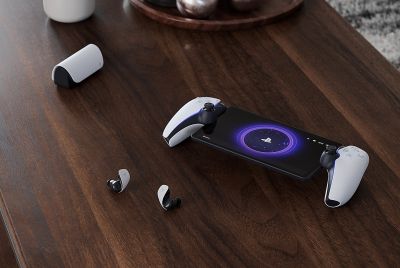Sony Trialled Sweat Sensitive PS4 Controller
The PlayStation 4 controller was originally designed to measure sweat levels on players' hands.

In an interview with Stuff, Mark Cerny, lead architect on the PlayStation 4, said that the new Dual-Shock controller was originally set to include a sensor to measure player's "galvanic response", i.e. how much they were sweating. If a player was sweating very little, PlayStation 4 games would respond in kind, and increase in intensity in order to ramp up the excitement.
"We had a long research project where we looked at pretty much any idea we could think of. Would it help to measure the galvanic response of the skin? We tried out a tremendous number of things - and then we went to the game teams to ask them what they thought they could use from the controller."
Though the sweat detector was ultimately scrapped, Cerny said the PlayStation 4 controller was still designed around action games, particularly first-person shooters:
"Historically we have heard many times that our controllers have not been ideal for first-person shooters so we wanted to make sure we had something that would be much better for that genre.
"We tested the throw of the triggers, the position of the triggers, how much pressure it takes. We looked at the joysticks, the dead spot, we looked at convexity and concavity."
Extraordinarily natural
The final PS4 controller, Cerny said, "feels extraordinarily natural."
Other game companies are experimenting with how biological responses can communicate with games. Half-Life developer Valve recently conducted an experiment with Left 4 Dead 2 players, whereby the company measured gamers' sweat levels and altered the on-screen action accordingly. The company also developed a version of its game Portal 2 which could be controlled using special sensors which tracked players' eye movements.
In the consumer space, the new Kinect motion sensor that will bundle with Microsoft's Xbox One will measure players' heart rate, the idea being once again to alter a game's content based on biological responses. The sensor will also be used as part of fitness games to ensure that players are not straining themselves while exercising.
© Copyright IBTimes 2025. All rights reserved.






















